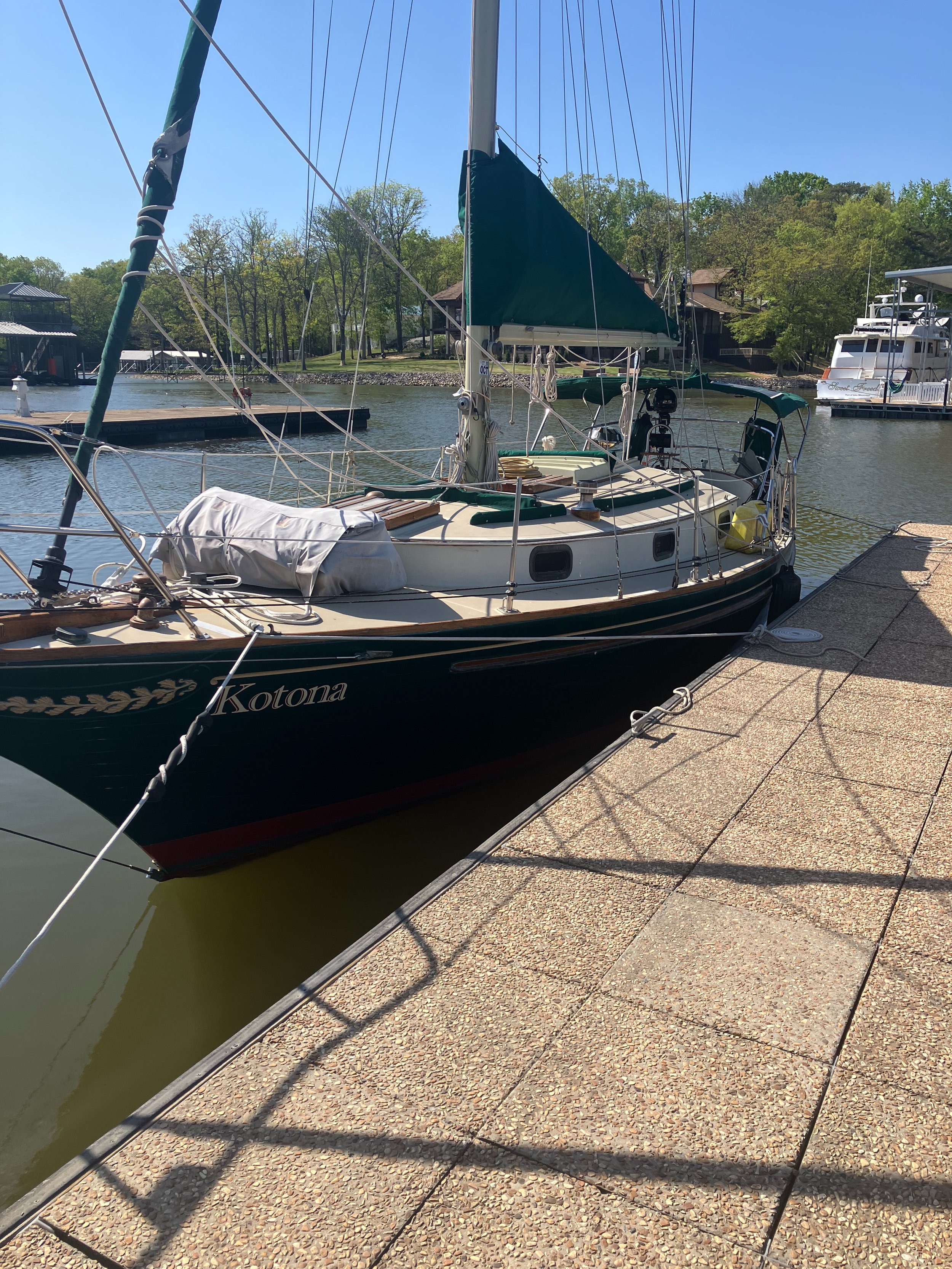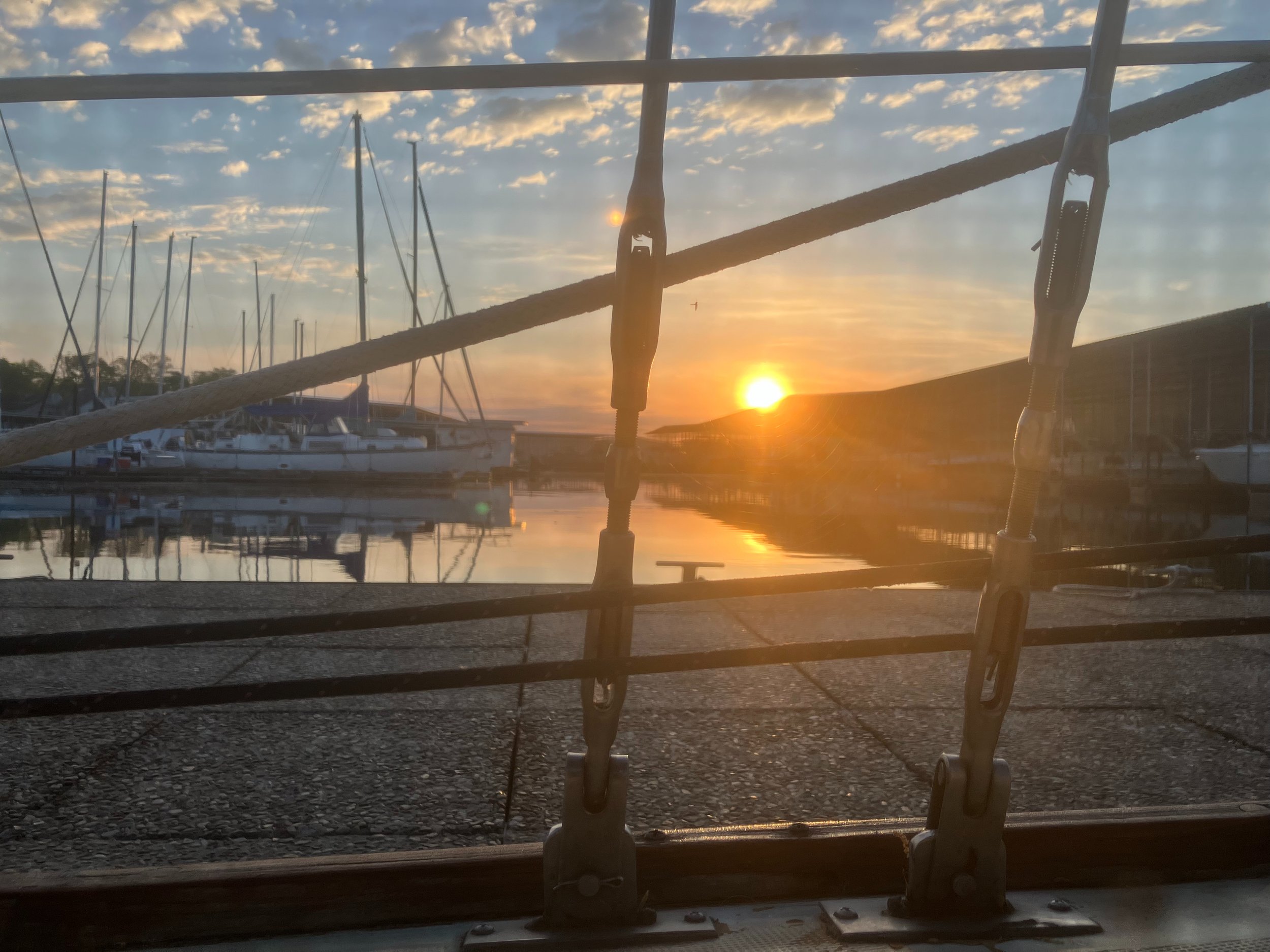Haul Out 2025 - Back to Pickwick
Boat projects never seem to end; whenever you check one item off the list, another (or more) comes along to replace it. I just checked one item off the list - scheduled our haul out. So now we can do new bottom paint, new stuffing box stuffing (or new unit depending on what I find), new anodes, and some varnishing work that will be easier to get to out of the water. See what I mean. Sigh.
On this part of the Tennessee River, there are only two DIY yards that I have ever heard about. One of those is 30 miles upriver from our current marina, and mostly inaccessible to sailboats due to depth. The other is 38 miles downriver, and that’s where we’re headed. Seven hours, give or take, travel time. Back to where we put our journey on hold two years ago - Pickwick Lake.
Spry Marine has an excellent reputation; which means they are always busy, so if you want them to do the work you may have to wait a while. But for DIY, if they have space, they will try to work you in. And they did. Thursday morning, 8:30 am. Which means leave Florence on Wednesday and either get a transient slip at a marina just upstream from the yard, or anchor out Wednesday night, then arrive on time Thursday morning.
We repaired a small fuel tank leak at the marina dock and made sure it was no longer leaking before we headed out. When I say we, I mean me and the boat. Amy already had an obligation for this Wednesday and Thursday. So my longest single-handed journey on Kotona was about to begin.
Wednesday morning began early. Added some water to the fresh water tank, checked the oil, rechecked the leak repair, tidied up the cabin, cranked the engine to let it warm up a bit and be completely sure that no air had entered the fuel line during the tank repair. Diesel engines don’t like having air in the fuel lines. Engine ran fine for about twenty minutes and I took that as a sign that all was well. Untied the lines, backed out of the slip, and headed for the fuel dock to add a few gallons. Just a few, as our 15hp Yanmar diesel engine, while not particularly fast, is quite thrifty on fuel.
Pulled away from the fuel dock a little after nine, carefully pulled out into the channel watching for barge traffic, then headed downstream. The river current below Wilson Dam, about 3 miles upriver from the marina, can be quite strong at times. Today it was not bad, but it was noticeable. Our speed over ground was around 6.3 knots, pretty good for a boat that obviously needs bottom paint.
This part of the river has several industrial parks along its banks, and barge traffic is common. Today the activity was fairly light, with more loading and unloading than on-the-water movement. So only a solitary tug to avoid, no fully loaded barge tows. Except that one ahead that I seemed to be gaining on. That’s a weird thought - that I’m actually gaining on a barge; I’m used to them passing me.
Radioed the captain to ask which side he would prefer me to pass, and after his response, maneuvered to begin that pass. This part of the river is plenty wide to give him the more than enough room. But even at a safe distance it’s still a bit intimidating to be next to something 200 or so feet long, carrying 1500 tons of cargo, that takes well over a mile to come to a complete stop. And we were next to him for a while. AIS showed his speed as 4.9kn, ours had slowed to 5.9, as the river begins to widen in this area and the current had less of an effect.
Shortly after that pass was complete, the bridge for the Natchez Trace Parkway was in sight. That bridge marks the area where Pickwick Lake becomes wider and deeper, and getting out of the main channel is much less problematic than it is further upstream. Today it also marked the place where the headwinds started. The forecasted light and variable winds slowly turned to a 5-10 knot wind out of the North, with higher gusts. Our speed over ground slowed to 5.5, and more like 5.2 in the gustier bits. After a particularly gusty bit, I took a moment to go below and grab my foul weather jacket, for some extra warmth. The forecast was for the mid seventies, but it hadn’t reached that yet, and the wind over a still cold lake, plus our forward speed of just over 5 knots made it a bit chilly under the shade of the bimini.
Pickwick Lake is less developed than some other areas of the Tennessee River. There are a few visible houses up in the hills in places, but large lakeside homes are uncommon through this stretch. Along the banks were multiple shades of green, as the different varieties of trees and shrubs made their contribution to the landscape, along with the occasional patches of dirt or rock, indicating the entrance to a cove or stream bed. Being a Wednesday, and with school still in session, boat traffic was pretty light. Only the occasional bass boat was encountered from the Natchez Trace bridge to Grand Harbor Marina. If you discount the sound of a well working diesel engine, it was a quiet peaceful passage.
It was nice to be back on Pickwick after a little over a year away. We really enjoyed quiet and the natural beauty of the lake and the numerous coves one can anchor in for a day or two. The turn to port down the channel leading to Grand Harbor and Spry Marina had a nice familiarity. And the staff at Grand Harbor were always nice to us, so a night there with shore power and wifi, seemed like a good idea.
Sunrise at Grand Harbor
The next morning began early with a quick breakfast and coffee, so that I could make it from Grand Harbor to the boatyard, basically around the corner. Surprisingly, there was quite bit of debris in the water this morning. Storms and heavy rains earlier in the week had washed tree limbs and branches into the river. Overnight, winds had blown some into the marina. Backing out of the transient slip, trying to avoid branches as thick as your leg, was a little stressful, but no boat damage.
The trip to Spry Marine took about 20 minutes and was uneventful, as was docking and tying up. Found the owner, chatted for a bit, showed him where the prop shaft exited the hull, so they could place the straps properly for lifting. After that it was stand back and watch my medium sized boat being lifted by a large piece of machinery. Interestingly, the yard had a cradle that was the right size for Kotona, which made the blocking process a piece of cake. By mid-morning she was secure and ready.
Out of the water…
After pressure washing.
Now the fun part can begin.






